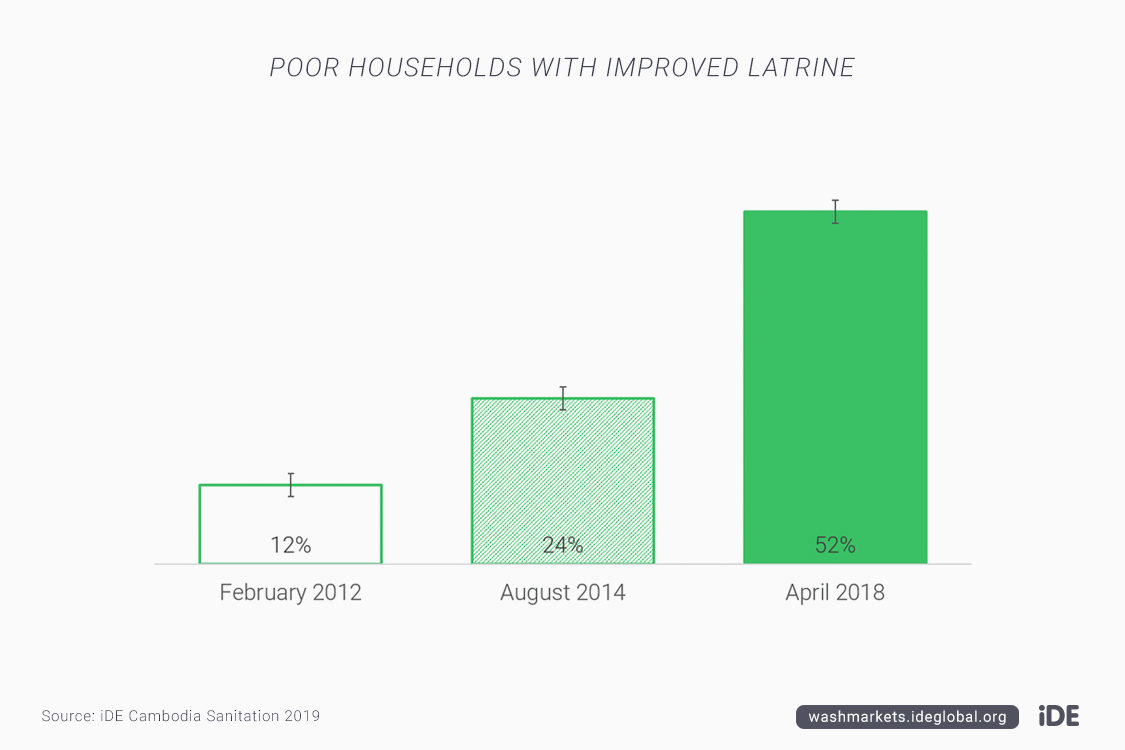Reaching the poor with sanitation

iDE Global WASH
The last mile of the sanitation market includes the poorest households.
One of the most stubborn challenges of market-based approaches for sanitation is how to close the affordability gap for poor households who do not have the funds to buy a latrine. iDE’s customer-based sales approach, which seeks to identify and address the customer’s problems, uses motivation rather than shame to drive the purchase decision, even among poor households.
Customer interviews reveal that, on average, 20% of sales are to poor customers (classified by the Cambodian government as either IDPoor1 or IDPoor2). While there are provincial variations (e.g., rates of poor sales in Oddar Meanchey and Siem Reap have declined over time while Svay Rieng rates improved), overall there is an equal distribution of poor sales across all provinces. Government estimates of IDPoor population in iDE’s targeted areas is 16% of the total population. Given that roughly 20% of our customers are IDPoor, that means we are over-serving the poor market relative to size. That being said, “over-serving” is what we would expect as poor households are less likely to have a latrine compared to non-poor households due to the association between latrine ownership and higher levels of income.

However, the figure below shows how the percentage of sales to poor households has declined over time. In 2014, 28% of households purchasing a latrine were either IDPoor1 or IDPoor2. By 2017 that number was only 20%. The interesting trend to note is that the percentage of sales to IDPoor2 households (the relatively less poor) remained constant; it is only sales to the poorest of households that declined from 14% to 6%.

This suggests that it is truly is the poorest of the poor households that compose much of last mile to reach as we close the gap to full coverage. It is clear that targeted subsidies or creative finance mechanisms will need to be considered to reach these households.
However, results from our ongoing coverage surveys show that remarkable achievement has already been made towards achieving our coverage goals even with this challenging market segment. Between 2012 and 2018, the percentage of poor households with a latrine in our operating areas has more than quadrupled from 12% to 52%.